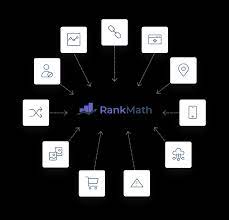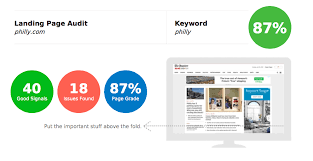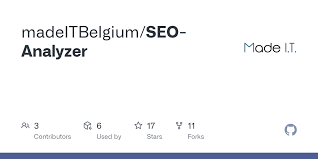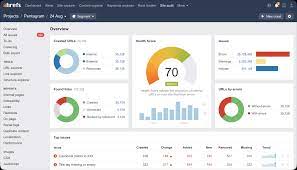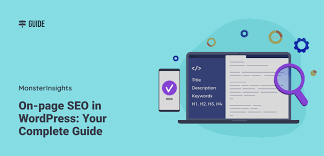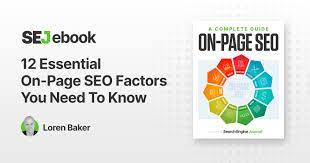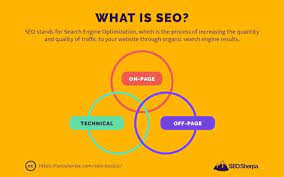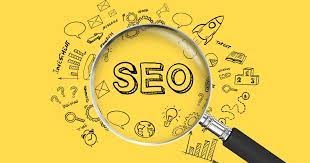Article: Google SEO Checker
The Power of Google SEO Checker: A Comprehensive Guide
In the world of digital marketing, search engine optimization (SEO) plays a crucial role in determining the online visibility of a website. Google, being the most popular search engine, offers various tools to help website owners improve their SEO performance. One such tool is the Google SEO Checker.
What is Google SEO Checker?
Google SEO Checker is a free tool provided by Google that helps website owners analyse their site’s SEO performance. It evaluates various aspects of a website, such as meta tags, headings, keywords, and overall content quality. By using this tool, website owners can identify areas for improvement and make necessary adjustments to enhance their site’s visibility in search engine results.
How Does Google SEO Checker Work?
Google SEO Checker works by scanning a website and generating a detailed report that highlights both strengths and weaknesses in terms of SEO. The tool examines factors like page loading speed, mobile-friendliness, backlinks quality, and more. Based on the analysis provided by the Google SEO Checker, website owners can take actionable steps to optimise their site for better search engine rankings.
Benefits of Using Google SEO Checker
- Insightful Analysis: The tool provides valuable insights into how well a website is optimized for search engines.
- Actionable Recommendations: Website owners receive specific recommendations on how to improve their site’s SEO performance.
- User-Friendly Interface: The tool is easy to use and understand, even for those new to SEO practices.
- Free of Charge: Google SEO Checker is available for free, making it accessible to all website owners.
Conclusion
In conclusion, Google SEO Checker is a powerful tool that can help website owners enhance their site’s visibility in search engine results. By leveraging the insights and recommendations provided by this tool, businesses can improve their online presence and attract more organic traffic. Whether you are new to SEO or an experienced marketer, using Google SEO Checker can be instrumental in achieving your digital marketing goals.
35 Common Questions About Using Google SEO Checker
- What is Google SEO score for website?
- How do I do a SEO check?
- How can I check my SEO score?
- How do I check my SEO score online?
- How do I check my SEO ranking?
- How do I find the SEO of a website?
- How can I do SEO audit for free?
- Does Google have SEO tools?
- Is 100 SEO score good?
- What is SEO Google?
- Does Google have free SEO tools?
- What is the Google score checker?
- How do I check SEO?
- Is SEO site Checkup free?
- Is SEO free on Google?
- How do I test my website for SEO?
- How can I check my SEO ranking for free?
- How do I check my SEO Score on Google?
- Is SEO on Google free?
- Is there a free SEO checker?
- How do I check Google SEO?
- How do you know if a website is SEO friendly?
- What is Google SEO testing tool?
- How is SEO score calculated?
- How do I check my site for SEO errors?
- Is 70 a good SEO score?
- How do I check my SEO level?
- What does SEO checker do?
- How can I check my website SEO ranking?
- What is your SEO score?
- Is SEO Analyzer free?
- How can I check my SEO?
- What is the best SEO checker?
- How do I check a websites SEO?
- How do I check my SEO rank?
What is Google SEO score for website?
When website owners inquire about the Google SEO score for their website, they are seeking an evaluation of their site’s search engine optimization performance by Google. The Google SEO score is a metric that assesses various factors influencing a website’s visibility in search engine results. This score takes into account elements like content quality, meta tags, backlinks, site speed, mobile-friendliness, and more. By understanding their Google SEO score, website owners can gain insights into areas that need improvement to enhance their site’s ranking and overall online presence.
How do I do a SEO check?
To perform an SEO check, start by using tools like Google SEO Checker to analyse your website’s SEO performance. Begin by assessing key elements such as meta tags, headings, keywords, and content quality. Ensure your website is optimised for mobile devices and has fast loading speeds. Evaluate backlinks quality and overall site structure. Review on-page and off-page SEO factors to identify areas for improvement. Implement recommended changes to enhance your site’s visibility in search engine results and attract more organic traffic. Regularly monitor and adjust your SEO strategies to stay ahead in the digital landscape.
How can I check my SEO score?
To check your SEO score, you can utilise tools like Google SEO Checker that analyse various aspects of your website’s search engine optimisation performance. These tools typically evaluate factors such as meta tags, keywords, backlinks, content quality, and more to provide you with a comprehensive SEO score. By running your website through these tools, you can gain insights into areas that need improvement and receive recommendations on how to boost your SEO score effectively. Regularly checking your SEO score is essential for monitoring the health of your website’s online visibility and ensuring that it remains competitive in search engine rankings.
How do I check my SEO score online?
To check your SEO score online, you can utilise tools like the Google SEO Checker, which offers a comprehensive analysis of your website’s search engine optimisation performance. Simply input your website URL into the tool, and it will generate a detailed report highlighting areas of improvement. Additionally, there are various other online SEO analysis tools available that can provide insights into your website’s SEO score, including factors like keyword usage, backlinks quality, meta tags optimisation, and overall content quality. Regularly monitoring your SEO score online is essential to ensure that your website remains competitive in search engine rankings and attracts organic traffic effectively.
How do I check my SEO ranking?
To check your SEO ranking, you can use various tools and methods, including Google SEO Checker. One common approach is to conduct a keyword search related to your website’s content and see where your site ranks in the search engine results pages (SERPs). Additionally, tools like Google Analytics and Google Search Console provide insights into your website’s performance, including keyword rankings, organic traffic, and click-through rates. Regularly monitoring these metrics and making adjustments based on the data can help improve your SEO ranking over time.
How do I find the SEO of a website?
To determine the SEO performance of a website, you can utilise tools like Google SEO Checker, which analyse various aspects of a site such as meta tags, keywords, backlinks, and overall content quality. Additionally, you can assess factors like page loading speed and mobile-friendliness to gauge the website’s search engine optimisation. By conducting a comprehensive evaluation using tools like Google SEO Checker and considering key SEO metrics, you can gain valuable insights into the effectiveness of a website’s optimisation efforts and identify areas for improvement to enhance its visibility in search engine results.
How can I do SEO audit for free?
Conducting a free SEO audit is a crucial step towards improving your website’s search engine performance. To perform an SEO audit for free, you can utilise tools like Google SEO Checker, which offers insights into various aspects of your site’s SEO. Start by analysing key elements such as meta tags, headings, content quality, backlinks, and page loading speed. Additionally, leverage Google Analytics and Google Search Console to gather data on your website’s performance and identify areas for enhancement. By utilising these free resources effectively, you can gain valuable insights and actionable recommendations to optimise your site for better search engine rankings without incurring any costs.
Many individuals often wonder, “Does Google have SEO tools?” The answer is yes, Google offers a variety of SEO tools to assist website owners in enhancing their online presence. One notable tool is the Google Search Console, which provides valuable insights into a website’s performance in Google search results. Additionally, Google Analytics offers in-depth data analysis to help understand user behaviour and track website traffic. These tools, among others provided by Google, are invaluable resources for optimising websites and improving their visibility in search engine rankings.
Is 100 SEO score good?
When it comes to evaluating SEO performance using tools like Google SEO Checker, the question of whether a 100 SEO score is good often arises. While achieving a perfect score of 100 may seem ideal, it is important to understand that SEO scores are not the sole indicator of success. A high score does indicate that your website meets many SEO best practices, but it doesn’t guarantee top rankings or maximum visibility. Focus on consistently improving your site’s SEO across various factors rather than fixating on a perfect score, as continuous optimization and relevant content are key to long-term success in search engine rankings.
What is SEO Google?
“SEO Google” refers to the practice of search engine optimization specifically tailored for Google’s search algorithm. In essence, it involves implementing strategies to improve a website’s visibility and ranking on Google’s search engine results pages (SERPs). By focusing on factors such as relevant keywords, high-quality content, mobile-friendliness, and user experience, website owners can enhance their chances of appearing higher in Google’s organic search results. Understanding and utilising SEO Google techniques are essential for businesses looking to attract more organic traffic and increase their online presence effectively.
For those wondering about Google’s offering of free SEO tools, the answer is yes. Google provides a range of free SEO tools to assist website owners in improving their search engine optimisation efforts. One notable tool in this arsenal is the Google SEO Checker, which analyses various aspects of a website’s SEO performance and provides valuable insights for enhancing visibility in search engine results. By utilising these free tools from Google, website owners can gain a better understanding of how to optimise their sites effectively and drive organic traffic to their online platforms.
What is the Google score checker?
The Google Score Checker is a tool that evaluates and analyses various aspects of a website’s SEO performance to provide a comprehensive score indicating how well the site is optimised for search engines. This score takes into account factors such as meta tags, keyword usage, backlinks quality, page loading speed, mobile-friendliness, and overall content relevance. By utilising the Google Score Checker, website owners can gain valuable insights into their site’s SEO strengths and weaknesses, helping them make informed decisions to improve their search engine rankings and enhance online visibility.
How do I check SEO?
To check SEO effectively, website owners can utilise tools such as Google SEO Checker to assess various aspects of their website’s search engine optimisation. Start by evaluating key elements like meta tags, headings, keyword usage, and overall content quality. Conduct a thorough analysis of factors that impact SEO performance, including page loading speed, mobile-friendliness, and backlink quality. By using tools like Google SEO Checker, website owners can gain valuable insights and actionable recommendations to improve their site’s visibility and rankings on search engine results pages. Regularly monitoring and adjusting these elements based on the tool’s feedback can help enhance overall SEO performance and drive organic traffic to the website.
Is SEO site Checkup free?
When it comes to the frequently asked question, “Is SEO Site Checkup free?” the answer is yes. SEO Site Checkup offers a free version of its tool that allows website owners to analyse their site’s SEO performance without any cost. This free version provides valuable insights and recommendations to improve SEO strategies, making it accessible to all users looking to enhance their website’s visibility in search engine results. With the free option available, website owners can take advantage of this tool’s features without any financial commitment, helping them make informed decisions to boost their online presence effectively.
Is SEO free on Google?
When it comes to SEO on Google, it is important to note that the organic search results generated by SEO efforts are indeed free. However, the process of search engine optimization itself requires time, effort, and sometimes financial investment in tools or services to enhance a website’s visibility and ranking on Google. While Google offers various free tools like Google SEO Checker to help website owners improve their SEO performance, implementing a comprehensive SEO strategy may involve costs associated with content creation, link building, and other optimisation techniques. Ultimately, while the organic traffic generated through SEO is free, the process of achieving and maintaining high search engine rankings may require resources to be allocated effectively.
How do I test my website for SEO?
To test your website for SEO, you can use tools like Google SEO Checker to evaluate various aspects of your site’s performance. Start by analysing your website’s meta tags, headings, keywords, and overall content quality. Check for factors such as page loading speed, mobile-friendliness, backlinks quality, and more. By conducting a comprehensive SEO analysis using tools like Google SEO Checker, you can identify areas for improvement and implement strategies to enhance your website’s visibility in search engine results. Regularly testing and monitoring your website’s SEO performance is essential to ensure that it remains optimised for better search engine rankings and increased organic traffic.
How can I check my SEO ranking for free?
To check your SEO ranking for free, you can utilise tools like Google SEO Checker, which offers a comprehensive analysis of your website’s performance in search engine results. By entering your website’s URL into the tool, you can receive valuable insights into factors affecting your SEO ranking, such as keywords, meta tags, backlinks, and overall content quality. Additionally, platforms like Google Search Console and Google Analytics provide valuable data on your website’s traffic and performance, helping you track your SEO progress over time. Regularly monitoring these metrics and making necessary adjustments based on the insights gained can help improve your website’s visibility and ranking on search engine results pages.
How do I check my SEO Score on Google?
To check your SEO score on Google, you can utilise the Google SEO Checker tool, which is designed to evaluate various aspects of your website’s search engine optimisation performance. Simply input your website’s URL into the tool, and it will scan your site to generate a detailed report highlighting strengths and weaknesses in terms of SEO. The report will provide insights into areas such as meta tags, keywords, content quality, backlinks, and more. By reviewing this analysis, you can identify opportunities for improvement and take actionable steps to enhance your site’s visibility in Google search results.
Is SEO on Google free?
When it comes to SEO on Google, the practice of optimising your website to rank higher in search engine results, it is important to distinguish between organic SEO efforts and paid advertising. SEO itself is a free process that involves improving various aspects of your website to enhance its visibility in organic search results. However, while the process of SEO is free, achieving and maintaining top rankings may require time, effort, and expertise. On the other hand, Google does offer paid advertising options like Google Ads for businesses looking to appear at the top of search results through sponsored listings. Overall, while SEO on Google can be pursued organically at no cost, businesses may choose to invest in paid advertising for more immediate and targeted visibility.
Is there a free SEO checker?
Many website owners frequently ask, “Is there a free SEO checker?” The answer is yes – there are several free SEO checkers available online, with Google SEO Checker being one of the most popular options. These tools offer valuable insights into a website’s SEO performance, analysing factors such as meta tags, keywords, backlinks, and more. By utilising a free SEO checker, website owners can gain a better understanding of their site’s strengths and weaknesses in terms of search engine optimisation, enabling them to make informed decisions to improve their online visibility and search engine rankings.
How do I check Google SEO?
To check Google SEO, website owners can utilise various tools and strategies to assess their site’s search engine optimisation performance. One popular method is to use the Google Search Console, a free tool provided by Google that offers insights into how the search engine views a website. Additionally, employing tools like Google Analytics can help track website traffic and user behaviour, providing valuable data for SEO analysis. Conducting keyword research, optimising meta tags, ensuring mobile-friendliness, and creating high-quality content are also essential steps in checking and improving Google SEO. By implementing these techniques and regularly monitoring performance metrics, website owners can enhance their site’s visibility and ranking on Google search results pages.
How do you know if a website is SEO friendly?
Determining whether a website is SEO-friendly involves assessing various factors that impact its visibility and ranking on search engine results pages. Key indicators of an SEO-friendly website include optimised meta tags, relevant keywords, high-quality content, fast loading speed, mobile responsiveness, proper URL structure, internal linking, and backlinks from authoritative sources. Conducting a thorough SEO audit using tools like Google SEO Checker can help identify areas for improvement and ensure that the website adheres to best practices for search engine optimisation. By focusing on these aspects, website owners can enhance their site’s SEO friendliness and increase their chances of ranking well in search engine results.
The Google SEO testing tool, often referred to as Google SEO Checker, is a valuable resource for website owners looking to assess and enhance their site’s search engine optimisation performance. This tool allows users to analyse various aspects of their website, including meta tags, content quality, mobile-friendliness, and more. By generating detailed reports and providing actionable recommendations, the Google SEO testing tool empowers website owners to make informed decisions that can improve their site’s visibility in search engine results. Whether you are new to SEO or an experienced marketer, utilising this tool can be instrumental in achieving better search engine rankings and attracting organic traffic to your website.
How is SEO score calculated?
The calculation of the SEO score is a complex process that involves analysing various factors to determine the overall performance and effectiveness of a website’s search engine optimisation. The SEO score is typically calculated based on a combination of on-page and off-page elements, including but not limited to meta tags, keyword usage, content quality, backlinks, site speed, mobile-friendliness, and overall user experience. Search engines like Google use sophisticated algorithms to evaluate these factors and assign a numerical score that reflects how well a website is optimized for search engine rankings. By understanding how the SEO score is calculated, website owners can make informed decisions to improve their SEO strategies and enhance their online visibility.
How do I check my site for SEO errors?
To check your site for SEO errors, you can utilise tools like Google SEO Checker to conduct a comprehensive analysis. Start by entering your website’s URL into the tool, which will then scan your site for various SEO factors such as meta tags, headings, content quality, and more. The tool will generate a detailed report highlighting any existing errors or areas for improvement. By reviewing this report and addressing the identified issues, you can enhance your site’s SEO performance and increase its visibility in search engine results. Regularly checking your site for SEO errors is crucial in maintaining a strong online presence and attracting organic traffic to your website.
Is 70 a good SEO score?
When considering whether a score of 70 is good in terms of SEO, it’s important to understand that SEO scores can vary depending on the tool used for evaluation. While a score of 70 may be considered decent in some SEO checkers, it may fall below the desired threshold in others. It’s crucial to interpret the score in conjunction with other factors such as content quality, backlink profile, and user experience. Ultimately, aiming for continuous improvement and aligning with best practices in SEO is key to achieving better search engine rankings and online visibility.
How do I check my SEO level?
To check your SEO level, you can utilise tools like Google SEO Checker to assess various aspects of your website’s search engine optimisation. Start by entering your website’s URL into the tool, which will then analyse factors such as meta tags, keywords, backlinks, and overall content quality. The tool will provide you with a detailed report highlighting both strengths and areas for improvement in your SEO strategy. By following the recommendations provided by tools like Google SEO Checker, you can take actionable steps to enhance your website’s SEO performance and increase its visibility in search engine results. Regularly monitoring and adjusting your SEO efforts based on these insights can help you maintain a strong online presence and attract more organic traffic to your site.
What does SEO checker do?
The SEO checker, such as the one offered by Google, performs a comprehensive analysis of a website’s search engine optimisation (SEO) elements. It evaluates various factors that impact a site’s visibility in search engine results, including meta tags, headings, keywords, content quality, backlinks, and more. By scrutinising these aspects, the SEO checker provides valuable insights into how well a website is optimised for search engines. It highlights both strengths and weaknesses in the site’s SEO strategy and offers actionable recommendations to improve its performance and increase its chances of ranking higher in search engine results pages.
How can I check my website SEO ranking?
To check your website SEO ranking, you can utilise tools like Google SEO Checker or other reputable SEO analysis tools available online. These tools assess various factors that influence your website’s ranking on search engine results pages, such as keyword usage, backlinks, content quality, and user experience. By entering your website URL into these tools, you can receive a detailed report highlighting your current SEO performance and areas for improvement. Regularly monitoring your website’s SEO ranking is essential for implementing effective strategies to boost visibility and attract more organic traffic to your site.
What is your SEO score?
When users search for “What is your SEO score?” regarding Google SEO Checker, they are typically inquiring about the numerical evaluation of their website’s search engine optimisation performance. The SEO score is a metric that indicates how well a website is optimized for search engines like Google. It takes into account various factors such as meta tags, keywords, backlinks, and overall content quality to provide an overall assessment of the site’s SEO health. By knowing their SEO score, website owners can gauge the effectiveness of their current SEO strategies and identify areas for improvement to enhance their online visibility and ranking in search engine results pages.
Is SEO Analyzer free?
When it comes to the commonly asked question, “Is SEO Analyzer free?” the answer is yes, many SEO analyzers, including popular tools like Google SEO Checker, offer their services for free. These tools allow website owners to assess their site’s SEO performance without incurring any cost. By utilising these free SEO analyzers, website owners can gain valuable insights into their site’s optimisation and receive recommendations for improving their search engine rankings. This accessibility to free SEO analysis tools empowers businesses of all sizes to enhance their online visibility and attract more organic traffic without financial barriers.
How can I check my SEO?
To check your SEO performance, you can utilise various tools available online, such as the Google SEO Checker. Start by conducting a comprehensive website audit to assess factors like meta tags, keywords, content quality, backlinks, and page loading speed. Analyse your site’s performance in search engine results pages (SERPs) and monitor key metrics like organic traffic, bounce rate, and conversion rates. Additionally, consider using tools like Google Analytics and Google Search Console to gain insights into your website’s SEO health and identify areas for improvement. Regularly monitoring and adjusting your SEO strategy based on data-driven analysis is essential for maintaining and enhancing your online visibility.
What is the best SEO checker?
When it comes to determining the best SEO checker, several factors come into play. The effectiveness of an SEO checker tool often depends on the specific needs and goals of the user. Some popular options include SEMrush, Ahrefs, Moz Pro, and Google Search Console. Each tool offers unique features such as keyword analysis, backlink monitoring, site audits, and more. It is essential for users to consider their requirements and budget when selecting the best SEO checker that aligns with their objectives. Conducting thorough research and testing different tools can help individuals find the most suitable SEO checker to improve their website’s search engine performance.
How do I check a websites SEO?
To check a website’s SEO, you can utilise various tools and methods, with Google SEO Checker being a popular choice. Start by conducting an in-depth analysis of the website’s meta tags, headings, keywords, and overall content quality. Evaluate factors such as page loading speed, mobile-friendliness, backlinks quality, and more to get a comprehensive overview of the site’s SEO performance. By using tools like Google SEO Checker, you can identify areas for improvement and receive actionable recommendations to optimise the website for better search engine rankings. Regularly monitoring and adjusting your SEO strategy based on these insights is key to enhancing your website’s visibility online.
How do I check my SEO rank?
To check your SEO rank, you can use various tools and methods to assess where your website stands in search engine results. One common approach is to utilise online tools like Google SEO Checker, which provides insights into your site’s SEO performance. Additionally, monitoring your website’s organic traffic, keyword rankings, and backlink profile can give you a comprehensive understanding of your SEO rank. Regularly tracking these metrics and making necessary adjustments to your SEO strategy based on the data can help improve your website’s visibility and ranking on search engines like Google.
